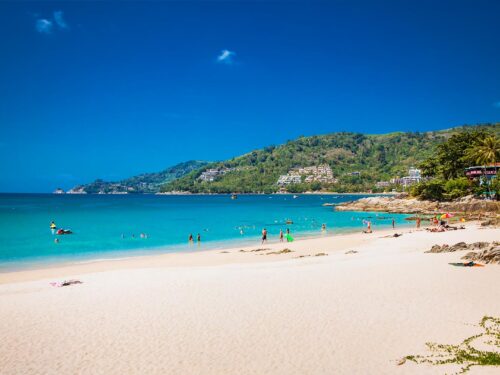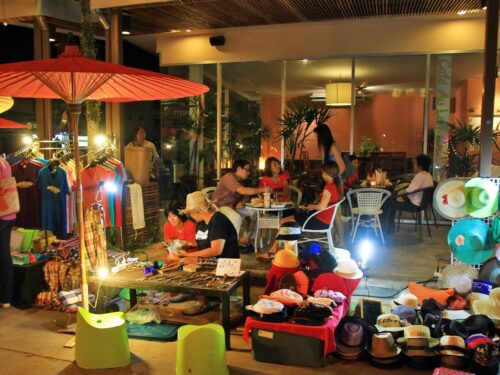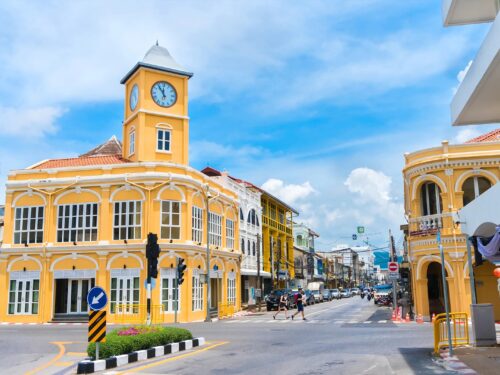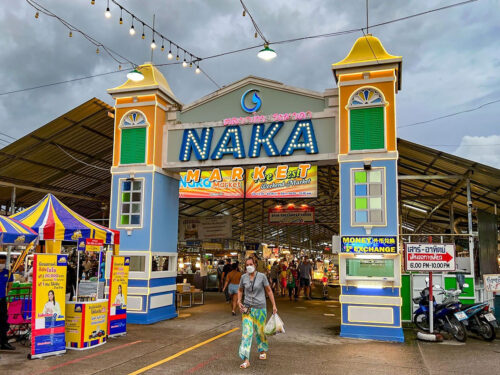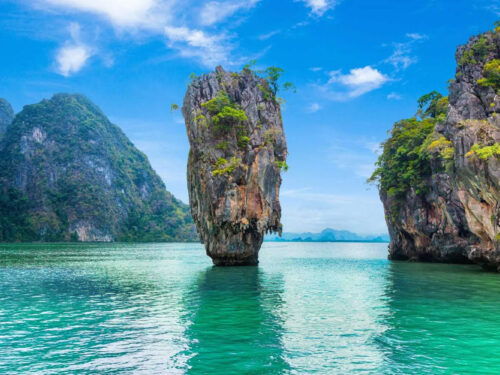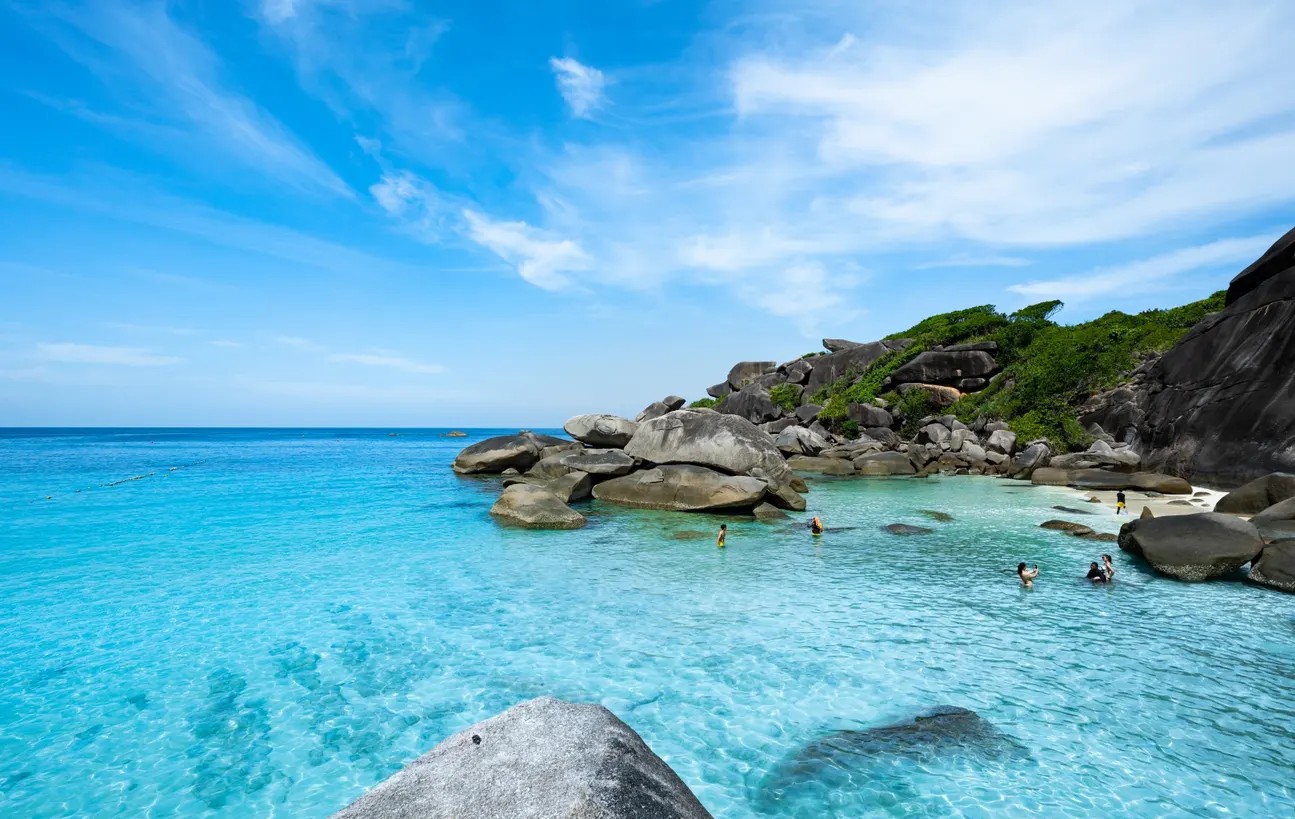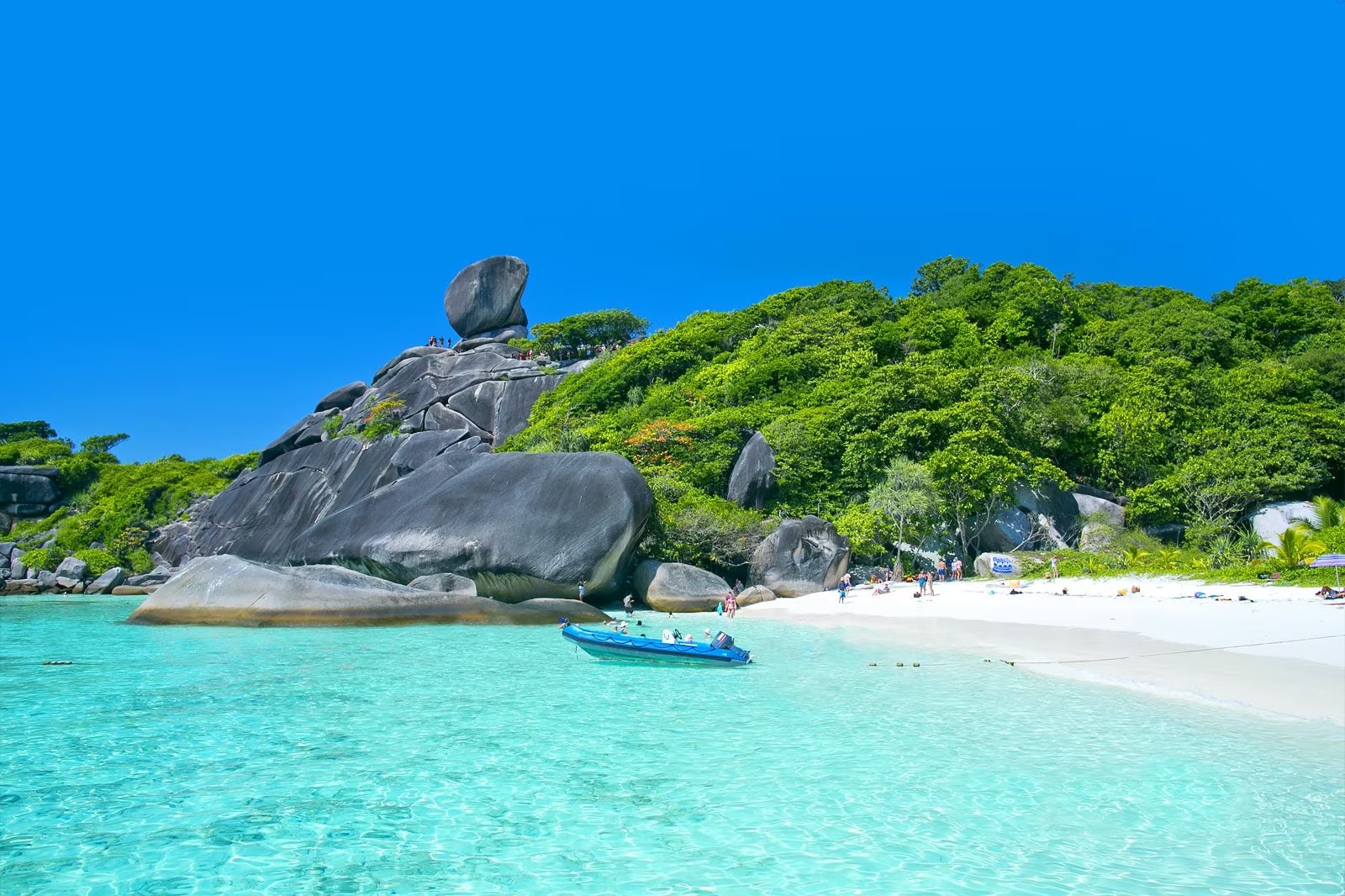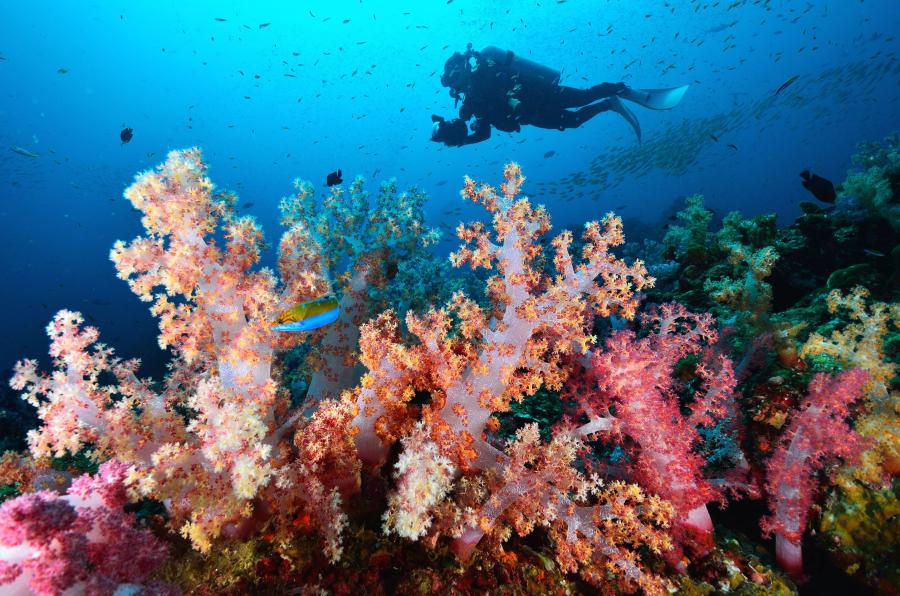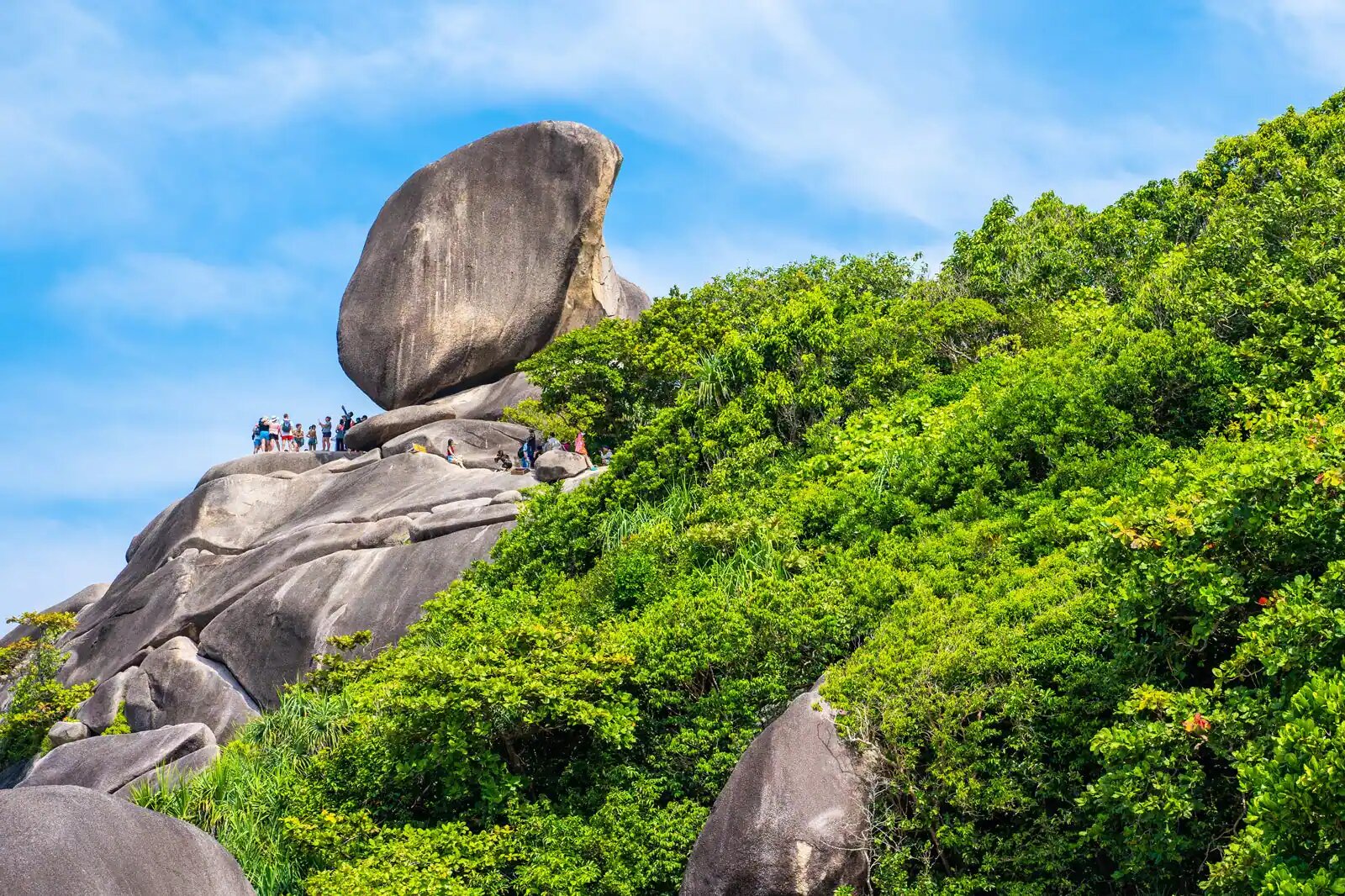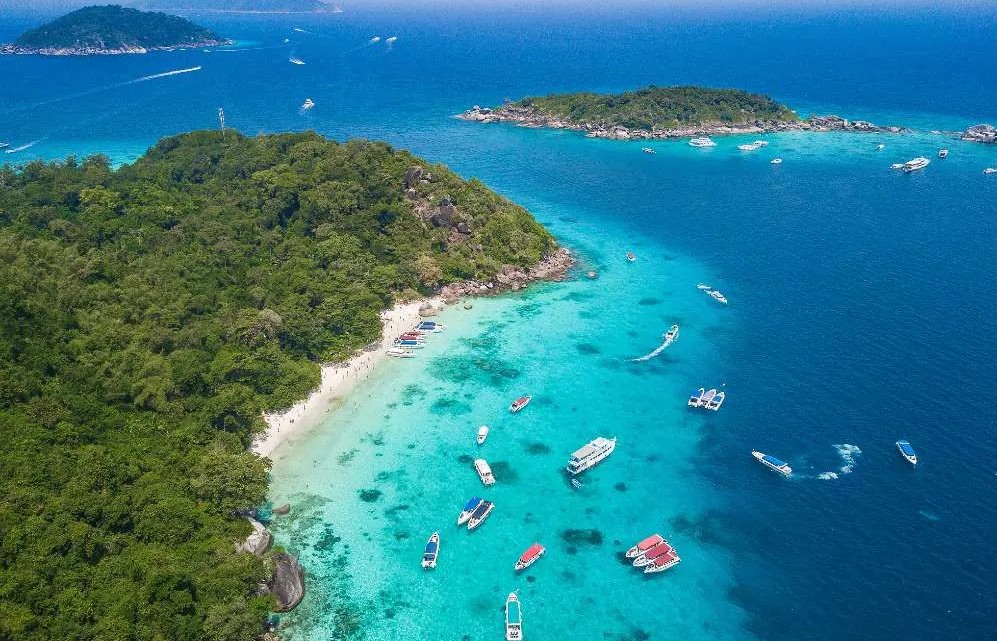Similan Islands – Everything you need to know
One of the best-known island groups in the Andaman Sea, the Similan Islands are a marvel to behold beneath the clear blue waters that surround them. They are about 84 km northwest of Phuket. This small archipelago is one of the most interesting diving areas in the world, as well as a favorite destination for yachtsmen and boat excursions.
The Similan Islands derive their name from “Sembilan,” the Malay word for nine. Interestingly, each of these enchanting islands is not only bestowed with a unique name but also assigned a number. The islands are ordered from north to south as follows: Koh Ba Ngu (No. 9), Similan (No. 8), Payu (No. 7), Miang (No. 4, No. 5, and sometimes regarded as No. 6), Payan (No. 3), Payang (No. 2), and Hu Yong (No. 1).
It’s worth noting that Hin Pousar, also known as ‘Elephant Head Rock,’ is alternatively designated as No. 6 by some. Additionally, Koh Bon, located 17 nautical miles north of Ba Ngu, is considered part of the Similan National Park and often bestows the honorary status of No. 10.
History of Similan Islands
Over the course of history, the Similan Islands have witnessed remarkable transformations, influenced by the ever-changing sea levels that fluctuated by up to 150 meters due to the ebb and flow of polar ice caps. These islands have experienced periods of submergence underwater, enduring battering storms, being adorned with marine growth, and even being inhabited by long-extinct creatures.
The formation of these islands has been shaped by various forces. Initially, the Similans emerged as intrusions, as hot magma surged through weak points in the Earth’s crust approximately 100-150 million years ago.
This volcanic activity took place within thick layers of sedimentary rock that had been deposited at least 100 million years earlier. Subsequently, unimaginably powerful movements within the Earth’s crust fractured the granite bedrock into distinct blocks, which were further sculpted by the relentless forces of wind and waves.
Similan Islands Today
Today, piles of curious stones, some as big as houses, lie as if gathered together and then carelessly abandoned in heaps by an ancient race of burrowing giants. Even Sailing Boat Rock, the distinctive formation that teeters above Koh Similan cove (island no. 8), was shaped in this way.
And rocks like these spill jumbled beneath the sea surface to 35 meters and beyond, where underwater peaks, canyons, caves and passages offer scuba divers some of the world’s most interesting underwater vistas. On the western side of the islands, currents have kept the formations free of sand; on the sandy, coral-covered slopes of the eastern side, the rocks have been largely buried.
Best time to visit Similan Islands
The optimal period to explore the Similan Islands is from the 15th of October to the 15th of May. It is important to note that the islands are inaccessible and closed to visitors from the 15th of May to the 15th of October. This closure period is implemented to safeguard the natural environment of the national park and ensure the safety of visitors. During this time, the monsoon season begins, resulting in rougher seas, which makes it impractical to visit the islands.
Coral environment of the Similan Islands
Beneath the surface of the water, a diverse array of marine creatures has played a crucial role in shaping the reefs and sandy beaches of the Similan Islands. As you ascend to Sailing Boat Rock, take a moment to appreciate the dazzling white sand below, which owes its existence in large part to the tireless efforts of organisms like the parrotfish. A single parrotfish can excrete over 16 kg of sand in a year as it grazes on hard corals during its lunchtime.
The Similan Islands provide ideal conditions for coral growth, with prevailing sea temperatures averaging around 28°C and exceptionally clear waters. Over 200 species of hard coral alone have been identified in this area, making it a haven for vibrant marine life. In fact, these islands boast the highest diversity of reef fish in Thai waters.
When it comes to both marine life and underwater topography, the Similan Islands offer more variety than many other dive destinations worldwide. Here, you can encounter a wide range of features, including coral walls (including Koh Bon to the north, considered part of the Similans), large rocks, majestic sea fans, and barrel sponges. Additionally, there are caves, swim-throughs, and abundant shallow areas that are perfect for snorkeling.
The fringing waters around the islands range in depth from 30 to 45 meters, with deeper channels of 70 to 80 meters between the islands. Even at shallow depths of 6 to 7 meters, you can discover enchanting coral gardens teeming with life.
What to see on Similan Islands?
When exploring the Similan Islands, you’ll encounter a different kind of beauty compared to the famous limestone islands of Krabi or Phang Nga Bay that are often associated with the Andaman Sea. Instead of towering cliffs, the Similans captivate visitors with their low-lying formations, adorned with dense forests. Among the verdant foliage, you’ll find towering ironwood and gum trees, while the undergrowth is filled with jackfruit, rattan, and bamboo.
The islands serve as a habitat for various wildlife, including crab-eating monkeys, dusky langurs, squirrels, bats, lizards, and a diverse array of bird species. While the monkeys tend to be shy and elusive, keen observers may catch a glimpse of these fascinating creatures.
At first glance, the most remarkable aspect of the Similan Islands is the presence of enormous boulders that adorn the western and southern shores of several islands. These striking rock formations create a dramatic backdrop against the sea. Additionally, the islands boast picturesque white coral sand beaches that exude tranquility and are often unpopulated, offering a serene setting for visitors.
However, the true treasures of the Similan Islands lie beneath the azure waves. Beneath the surface, you’ll discover some of the world’s most breathtaking coral formations. The same boulders that grace the island’s shores have transformed the surrounding waters into a playground of adventure for divers.
Cruises to the Similan Islands
The Similan Islands have gained renown as a premier destination for diving and snorkeling, but their picturesque anchorages have also captured the attention of sailing enthusiasts. Each year, numerous yachts venture to cruise the Similans during the northeast monsoon season, which spans from November to May, with the peak occurring from December to February.
If you wish to embark on a sailing adventure, you can book bareboat sailing charters and sailing-diving cruises from Phuket. In case your yacht lacks scuba gear or a compressor, you can easily rent the necessary equipment from dive boats that frequently operate from Phuket. Additionally, during the high season, an increasing number of day boats depart from Phuket and Phang Nga, bringing sightseers, picnickers, and snorkelers to experience the wonders of the Similan Islands.
How to get there
There is no regular boat service for visitors to the Similan Islands. During the low season, which runs from May to October, boats may cease operations altogether due to unfavorable weather conditions.
The nearest departure point for the Similan is Thap Lamu pier, located in the Thai Muang district of Phang Nga province. Boat trips from Thap Lamu jetty usually take around 3 hours to reach the islands. For more adventurous travelers, it’s possible to hitch a ride on some of the local boats bound for the Similan Islands. However, it’s important to allow plenty of time for your trip, as there’s no guarantee of a return on any given day. It should be noted that foreign visitors are required to pay a park entrance fee of around 500 baht.
Day trips are also available from Phuket and Khao Lak. Journey times vary from 45 minutes to 3 hours, depending on the type of boat used. Another popular option, especially for divers and deep-sea fishermen, is to take a fishing boat trip from Phuket. These excursions usually last 4 days and offer different levels of luxury and facilities on board, with various cruising operations available in Phuket.
Looking to experience the breathtaking beauty of the Similan Islands? Contact Thai Unika Travel today and let the journey begin!
Other attractions




